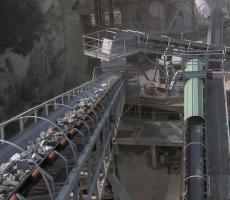Many industrial operations need to make mass flow measurements of dry bulk solid materials on conveyor belts, and on screw and chain conveyors (Figure 1). Typical industrial applications include moving materials at mine sites, paper mills, and power plants, as well as bulk material blending. Loading and unloading of trucks, barges, and railcars to and from plants are also popular applications. Mass flow measurements of these bulk solids are required for two main reasons, control and material transfer.
In control applications, the amount of material fed to a downstream process is regulated. Mass flow is measured and sent to an automation system, which can then speed up or slow down the conveyor to control the amount of material being delivered to a downstream process, such as ore into a crusher at a mine or wood chips into a digester at a paper mill. Alternately, the measurement can be used as a setpoint to control other processes, such as the feed of a secondary material in a blending system.
In material transfer applications, the mass flow must be measured to ascertain the amount of material being transferred from one place to another, such as from a process plant to a truck or from a coal bin to a kiln.
Two common ways of making these mass flow measurements are radiation-based instrument and belt conveyor load cells. The Table compares these two technologies, and the text below describes each in detail.
Read more: Measuring Bulk Solids on a Conveyor








